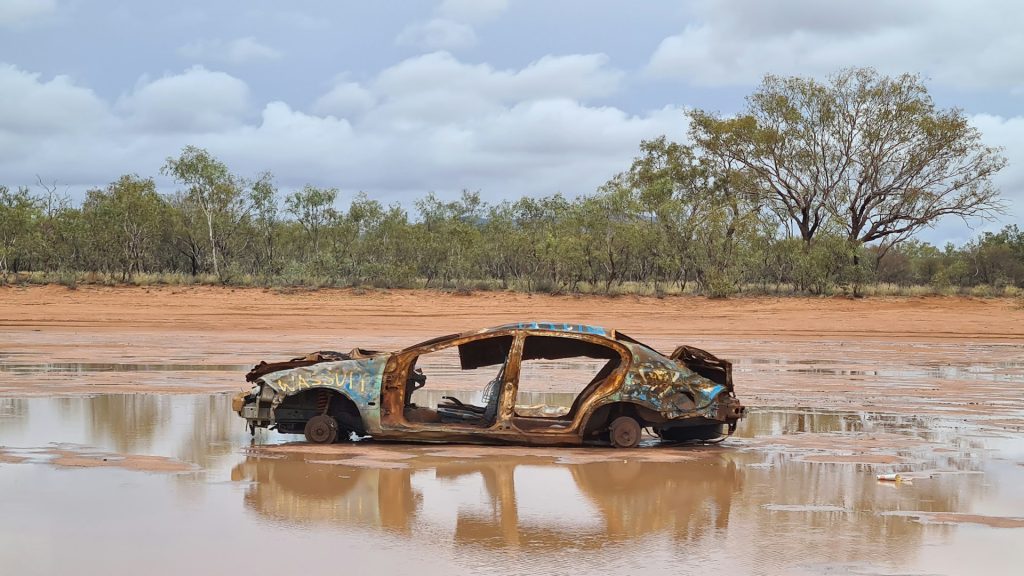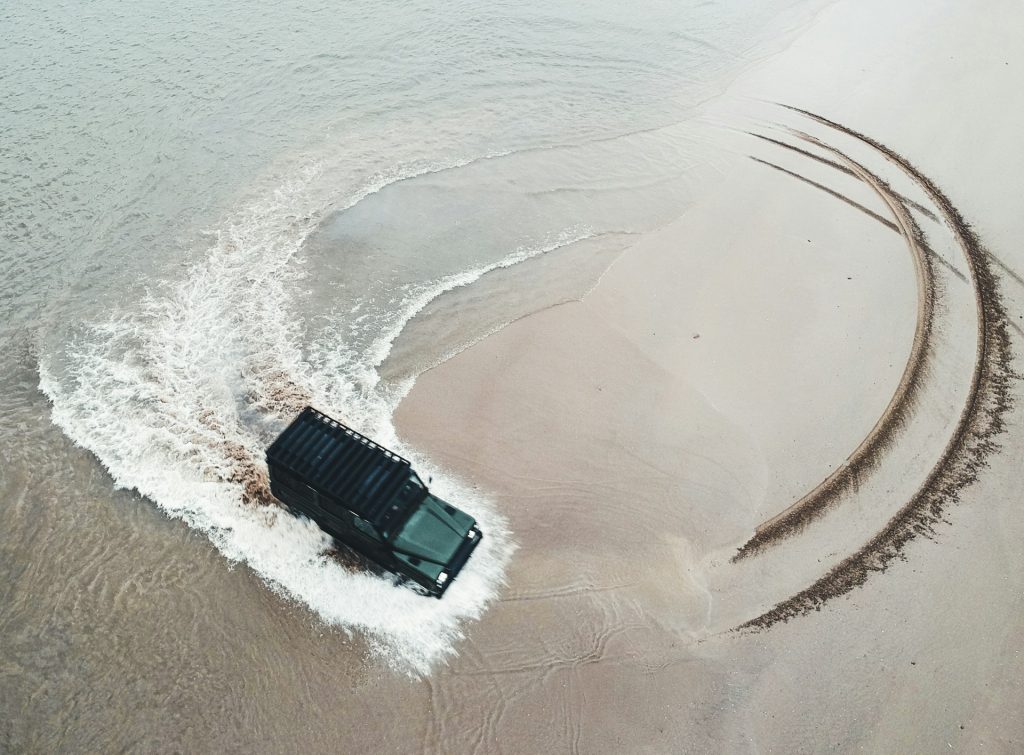Common problems with flooded cars create many nuisances for their owners. People should be aware of the signs that indicate damage by floods to save their money from going into repairs. Symptoms in flooded cars are often latent. The electrical system displays erratic behavior due to high moisture. The undercarriage is usually rusted and corroded. The inside smells damp and displays water stains. Additionally, the engine may run poorly or not start at all. Being aware of these symptoms can help you identify flood-damaged vehicles. This knowledge is crucial for maintaining the safety and reliability of your car.
Table of Content
- What Does Flood Damage Do to a Car?
- How to Tell if a Car Has Been in a Flood
- A Checklist on Spotting Flood Damage
- How to Protect Yourself from Fraud with Flooded Cars
- Is It Possible to Check a Car’s History for Flood Damage?
- Is a Flood Damaged Car Repairable?
- Can You Insure a Flood Damaged Car?
- Summary
- FAQ
What Does Flood Damage Do to a Car?

A flood, in turn, really can be ruinous to a car because of the massive, expensive damage. A vehicle that carries a title with a flood marking has been underwater, which weakens its structure. The engine and transmission are susceptible to water penetration, which is among the causes of performance defectiveness. Electrical parts could also short-circuit and lead to malfunctions in various car systems. In addition, rust will undermine the metal parts of the car and the life cycle of the vehicle will be considerably shortened. The upholstery and carpets can get moldy, causing impairment to the quality of indoor air. For a better understanding, you can explore water flood damaged cars. Proper inspection is essential before purchasing a flood-damaged vehicle.
How to Tell if a Car Has Been in a Flood
Identifying a car flooded with water requires careful inspection and attention to detail. Look for water lines on the interior, which indicate the level of flooding. Even minor flooding can cause significant hidden damage to a vehicle’s systems. Check under the seats and carpets for dampness or mold growth. Inspect the headlights and taillights for trapped moisture, a sign of water intrusion. Examine the engine bay for mud or debris, which can indicate flood exposure. Smell the interior for musty odors, a common sign of water damage. These steps help ensure you avoid purchasing a flood-damaged car.
A Checklist on Spotting Flood Damage

When buying a used car, it’s crucial to spot signs of flood damage to avoid future issues. Use this checklist to help identify potential flood damage in a vehicle.
| Checklist on Spotting Flood Damage | Details |
| Water Stains on Upholstery | Look for discoloration or watermarks on seats and carpeting. |
| Rust on Metal Components | Check for rust under the dashboard, seats, and inside door frames. |
| Musty Odor | A persistent musty smell can indicate prolonged exposure to water. |
| Electrical Malfunctions | Test all electrical components for inconsistent operation or failure. |
| Foggy Headlights and Taillights | Moisture inside lights can be a sign of water intrusion. |
| Mud or Debris in the Engine Compartment | Inspect the engine bay for unusual dirt, mud, or plant material. |
| Warped or Soft Flooring | Press down on the car’s floor to check for unusual softness or warping. |
| Mold or Mildew Growth | Look for mold or mildew in hidden areas such as under seats and carpets. |
| Sticky Residue | Feel for sticky residue around the door seals, indicating prolonged dampness. |
| Corrosion on Battery Terminals | Check the battery for signs of corrosion, which water exposure can accelerate. |
How to Protect Yourself from Fraud with Flooded Cars
Protecting yourself from fraud with flooded cars requires vigilance and thorough checks. Verify the car’s title status to ensure it hasn’t come from a flood junkyard. Be cautious of unusually low prices, as they may indicate hidden problems. Have a trusted mechanic inspect the car for hidden damage to vital components. Look for mismatched paint or new parts that may cover up flood damage. Check for signs of mud or water residue in hidden areas. Educate yourself about the risks of buying a salvage car to avoid costly mistakes. You need to be careful when buying a salvage car. Taking these steps can protect you from fraud.
Is It Possible to Check a Car’s History for Flood Damage?
Yes, it is possible to check a car’s history for flood damage through several methods. A close inspection of the vehicle is essential to identify potential flood issues. Look for a salvage flood title in the vehicle’s history report, indicating previous water damage. Use online databases to access detailed information about the car’s past incidents. Pay attention to discrepancies in the car’s documentation, which can signal hidden damage. Verify the vehicle’s title and ownership history through official channels. Additionally, consult with professional services that specialize in detecting flood damage. Thorough research and verification can help you avoid costly mistakes. Here are some helpful tips:
- Check the Vehicle Identification Number (VIN): Use the VIN to obtain a detailed vehicle history report.
- Consult a Trusted Mechanic: Have a professional inspect the car for any hidden flood-related issues.
- Review Maintenance Records: Check for gaps or inconsistencies in the car’s maintenance history.
Is a Flood Damaged Car Repairable?
Although a flood-damaged car can often be repaired, it requires high effort and a significant cost. The cost of repairing a water-damaged vehicle is high. One needs to know how to fix a flood-damaged vehicle, which includes professional expertise to identify problems and deal with hidden issues. Water damage targets electrical systems, engine parts, and many materials making up the interior. Eliminating all defective parts and ensuring the vehicle is completely dry is very important in the repair process. To buyers of flood-affected cars, one can look for car auctions selling autos and attain low-cost vehicles. Still, all these factors need to be considered in line with the value the vehicle offers.
Can You Insure a Flood Damaged Car?
You can insure a flood-damaged car, but it may have certain limitations. Comprehensive coverage is necessary to protect against future water damage claims. However, many insurers are cautious about offering full coverage to previously flooded vehicles. They may only allow you to carry liability, which covers damages to other parties. It is essential to disclose the car’s flood history when applying for insurance. Some insurers might charge higher premiums due to the increased risk. Carefully review the policy terms to understand what is covered. Ensuring a flood-damaged car requires thorough research and communication with your insurer.
Summary
In summary, understanding car flood damage symptoms is crucial for anyone considering a used vehicle purchase. Identifying signs of water damage, such as rust, mold, and electrical issues, is essential. A close inspection and thorough history check can reveal hidden problems. Vehicles with a salvage flood title often carry significant risks and repair costs. Insurance options may be limited to comprehensive coverage or liability only. You can avoid costly mistakes by knowing how to spot and handle flood-damaged cars. For a more detailed examination, always check a car history before making a decision. This diligence ensures a safer investment.
![]() FAQ
FAQ
Show more
How Long Does It Take for Water Damage to Affect a Car?
Water damage can affect a car almost immediately after exposure. Electrical systems and vital components can begin to malfunction within minutes. Over time, rust, mold, and corrosion will develop, leading to further deterioration. It’s important to address water damage quickly to minimize long-term impacts.
Is a Flooded Engine Ruined?
A flooded engine can be heavily damaged, but it usually isn’t destroyed. Some strict and prompt measures to remove water and allow it to dry might, in a few instances, save the engine. Most of the time, though, it will suffer severe internal damage due to prolonged exposure to water, which eventually calls for a major repair or a new engine.
What Happens If Water Gets in Your Car Interior?
If water gets in your car’s interior, it can lead to mold, mildew, and unpleasant odors. Upholstery and carpets can become saturated, causing stains and deterioration. Electrical components and wiring under the seats and dashboard are also at risk of damage.
Is It Illegal to Sell a Flood-Damaged Car Before Repairs?
It is not illegal to sell a flood-damaged car before repairs, but full disclosure is mandatory. Sellers must inform potential buyers of the car’s flood-damaged status. Failing to disclose this information is considered fraudulent and can result in legal consequences.
Recommended Articles
:format(webp)/vulcan.abetter.bid%2Fwp-content%2Fuploads%2F2023%2F07%2Froger-starnes-sr-d4KW_XDfCtU-unsplash.jpg)

:format(webp)/vulcan.abetter.bid%2Fwp-content%2Fuploads%2F2024%2F07%2Ffilip-bunkens-S07WZ4ESDro-unsplash.jpg)
:format(webp)/vulcan.abetter.bid%2Fwp-content%2Fuploads%2F2022%2F10%2F2022-10-05-11.30.40-150x150.jpg)
 FAQ
FAQ :format(webp)/vulcan.abetter.bid%2Fwp-content%2Fuploads%2F2022%2F09%2Fcaspian-dahlstrom-Zo6hsIyy75o-unsplash.jpg)
:format(webp)/vulcan.abetter.bid%2Fwp-content%2Fuploads%2F2022%2F10%2F2022-10-05-11.31.58-150x150.jpg)
:format(webp)/vulcan.abetter.bid%2Fwp-content%2Fuploads%2F2025%2F12%2Fcopart-vs-manheim-cover-1.png)
:format(webp)/vulcan.abetter.bid%2Fwp-content%2Fuploads%2F2025%2F11%2Fautobidmaster-vs-copart-1.png)
:format(webp)/vulcan.abetter.bid%2Fwp-content%2Fuploads%2F2025%2F11%2Fa-better-bid-vs-autobidmaster.png)

